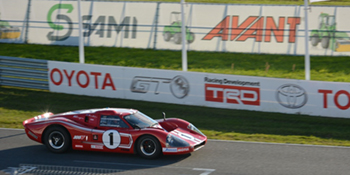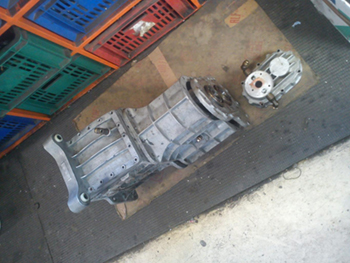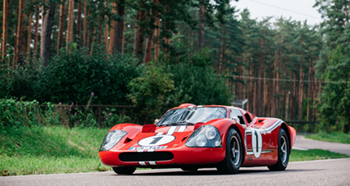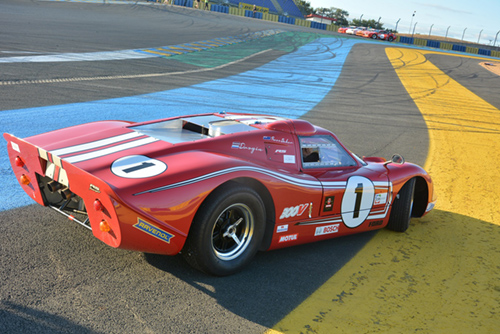Heron GT Mk4
by Patrick Harlow

1967 Heron as it would have looked racing at Whenuipai in 1986. Pic credit Adrias Stals. 
GT Mk4 transaxle designed by Ross Baker. 
|
Once the Mk2 and Mk3 cars had been sold, Ross and Bob were keen for another challenge, perhaps their hardest to date. The Lotus 23-inspired Heron Mk1 had been a great looking car while the Mk2 and Mk3 cars had a form that was governed by their function. For their next car, they would make a replica of the Ford GT40 Mk4, a car that had dominated GT Sports Car racing in the U.S.A. and Le Mans from 1966 to 1968. The intention was to build it within a year to be ready for the 1971/72 Sports Car race season. They chose the 1967 MK4 GT40 because, in Ross’ opinion, it was, at the time, the best-looking race car ever. It was also the car which won Le Mans for Ford in 1967. About halfway through 1969, he began collecting all the information he could find from magazines and other sources. Ross spent a year designing this car. There were many challenges, since he had never built a monocoque chassis or a four-speed transaxle transmission -- let alone one that could cope with in excess of 350 HP. He drew the basic car and then broke it down into individual panels, to make up the monocoque chassis. There were 57 panels in total. Once the drawings were complete, Bob and Ross started cutting the panels out by hand and folding them to shape. The panels were either spot-welded or pop-riveted together. Ross designed his own transaxle to bolt onto the Chev 350 V8 engine. Bob Gee made the patterns out of wood and fibreglass and it was cast from aluminium at a local foundary in Rotorua. |
|
Ross spent many more months constructing the monocoque chassis and suspension components, while Bob worked on the male plug for the body. Both jobs were major tasks, the biggest that either of them had tackled to date. When Ford built the GT40, they were determined to beat Ferrari at any cost. Working in Bob Gee’s shed Ross had a slightly different perspective and not even a smidgen of the Ford budget. Technical support came from books and the school of: ‘if it doesn’t work, find a solution and make it again’. The car was about three quarters finished, when the controlling body of motor racing in New Zealand suddenly announced it had decided to change the rules effectively removing the elegibility for his car to race in New Zealand. Both Ross and Bob were devastated. They had worked almost nonstop on this car for a considerable amount of time, they had overcome multiple challenges and all to have ‘the establishment’ make it obsolete. The car was almost finished, so in disgust, Ross drove it up and down the street a few times to prove it worked, then it was pushed to the back of the basement garage under his house where it sat gathering dust for years. However, it was dragged out and dusted off for the Heron MJ1 launch and two demostration races in New Zealand during 1988. It was thanks to the efoorts of Chris Cooke that this car was ready in time as it still required final finishing, painting and a good tidy up. The races were at Whenuapai and at Bay Park – Marny, the daughter of Ross, drove it at Bay Park. The car was later sold and Ross lost track of it until contacted by its current owner who invited Ross to come over to France in 2018 to watch it race at Le Mans. |

Heron GT Mk at Le Mans in 2018. |

Le Mans 2018.









